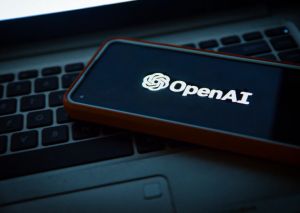No-Code: lots of promises...and limits
No-code accelerates development while greatly reducing costs. What are the eligible use cases? Which companies use this approach? What are the obstacles to overcome? Here are some answers.
No-code is set to reshuffle the deck in development. By avoiding the use of traditional computer languages, this approach makes it possible to develop websites and web applications up to three times faster, at a cost that is at least halved.
No code is one of the answers to the shortage of developers and the desire to reduce the "time to market", a key factor in the development of new products.
"time to market", a key factor in digital transformation. It also contributes to the digitalisation of small and medium-sized businesses with limited budgets.
According to the research firm Gartner, 80% of technological products and services could be designed by non-computer scientists by 2024. From a 100% graphical interface, a
From a 100% graphical interface, a "maker" or "product builder" assembles pre-parameterised functional bricks in the manner of a Lego, establishes the workflow of the future solution, then links it to a database.
In itself, the desire to create applications using as little code as possible is not new. The phenomenon goes back a few decades with integrated development environments (IDEs) and software engineering workshops such as Microsoft's Visual Basic or WinDev.
How, then, can we explain the explosion of no code? For Maxime Topolov, co-founder of the code.store agency, "the phenomenon benefits from the multiplication of APIs allowing front end applications or dashboards to interact with the company's applications and data.
No-code: filling the gaps in CRM
What are the eligible use cases? From simple spreadsheets to custom CRM and business process automation, the spectrum is wide.
In the field of customer relationship management or e-commerce, there are many vertical niches that are not completely covered by market solutions such as Salesforce or HubSpot," continues Maxime Topolov. The no-code will, for example, allow a barber to have a dedicated CRM.
One of the first no-code projects that Christelle Curcio, co-founder and chief makers officer of the Alegria group, worked on was also a CRM for a law firm.
"The idea was to determine the three most relevant prospects to invite to lunch during the month. No software on the market answered this question.
The no-code also makes it possible to overcome the functional shortcomings of business software packages and other ERPs.
"To fill in the gaps in the data, operational staff use Microsoft Excel or Google Sheets," notes Maxime Topolov.
Christelle Curcio agrees. "An off-the-shelf solution does not cover 100% of a company's needs and the company only really uses 10% of its functionalities. The publisher follows its product roadmap and cannot afford to do customisation.
The use of no-code also favours the automation of all manual processes, particularly in the support functions of finance, marketing, communication, IT or HR. For example, a company will have a tool for booking meeting rooms or an internal workflow for validating expense reports.
"This allows both productivity gains and the release of energy by relieving employees who were carrying out these repetitive and time-consuming tasks," observes Christelle Curcio.
Maxime Topolov cites as another example the case of an application developed to manage breakfasts within a hotel chain. "Instead of printing out an A4 sheet every morning and crossing out the names of the guests present, the hotel staff use a tablet. The guest's name and room number are automatically transferred from the ERP system.
Co-founder and CEO of Cube, Pierre Launay started working with Airtable and Make (formerly Integromat) precisely because he wanted to maximise the processes of his agency. "I quickly saw the value of these tools. Once you've had a taste of no code, you try to optimise all the low value-added tasks such as reconciling an invoice and a quote.
He also believes that no-code can be used to test a new market's appetite for a product or service. He cites the case of the temporary employment agency Gojob, which wanted to export its model. "It was quickly able to see that the American market responded favourably to its offer, but not the British market. More generally, Christelle Curcio believes that the no-code culture frees up the potential for creativity. "How many times have I heard: if I knew how to code, I would do a lot of things? As a trained designer, I was personally frustrated by having to stop at the mock-up stage. Today, I can go to the end of my ideas without depending on the IT department. In this sense, the no-code represents, in his eyes, a real technological and societal revolution. "Engineers are no longer the only ones to govern the digital world. Everyone can become an actor in their digital life. However, no-code is not intended to replace hard coding, but to complement it. There will always be a need for traditional developers, if only to maintain critical systems such as ERP, based on a strong legacy.
Setting a governance framework
Today, it is advisable for a company to establish rules of governance. Which projects are eligible or not for low code-no code, depending on the existing situation and the level of integration with the information system?
To answer this question, the Colas Group has set up a dedicated centre of excellence and opened a development factory dedicated to low code-no code alongside those for the PHP and . Net environments. At the same time, Colas is pursuing a policy to promote citizen developers, these business experts who, thanks to low code-no code, are able to create their own applications.
The world's leading construction company identifies employees who have designed applications used by more than one person in order to support them, guide them in their choices, but also make them aware of the risks. "When an application becomes critical, we need to be able to take it over centrally in order to maintain it in the event of the creator's departure or leave," says Jean-Michel Maillet.
A low-code-no-code project remains a project like any other with its quality and maintainability requirements.
The Californian publisher gives in to the temptation of generative AI. Einstein GPT combines Salesforce's proprietary AI for CRM with that of OpenAI. Its model is trained with public data, but companies can feed it with their own data.
Salesforce took advantage of its Trailblazer DX developer conference in San Francisco on 6 and 7 March to announce its generative AI. Einstein GPT is, as its name suggests, a combination of the editor's proprietary Einstein technology and ChatGPT-type models. The Californian company will enter into partnerships with various suppliers, starting with the best-known, OpenAI, the originator of ChatGPT, Dall-E and Whisper.
Salesforce has integrated Einstein GPT into its business applications for sales, service, marketing, sales and IT. The solution is already interfaced with Mulesoft, Tableau and Slack. For example, a sales team will use it to identify new prospects and relevant people to contact, whether or not they are already in the company's CRM. The AI will then suggest to the sales team that they start a conversation with their target by email, based on previous exchanges, among other things. Employees can directly edit these pre-written texts, but can also ask the AI to rewrite its messages in a lighter tone, for example. Unlike consumer AI such as chatGPT, interactions between "humans" and Salesforce's generative AI are integrated directly into the user interface of business applications,
A human in the loop
The trauma of cognitive bias in AI does not spare Salesforce. Clara Shih, corporate vice president and general manager of Service Cloud, was quick to quote the now hackneyed Spiderman line: "With great power comes great responsibilities". The Einstein GPT teams are working closely with the publisher's ethics department, without giving further details. Moreover, Jayesh Govindarajan, senior vice-president of AI and machine learning, has repeatedly stressed the importance of systematically keeping a "human in the loop". This is as much about ethics as it is about the ability to verify the ownership of the data used or the relevance of the results of queries sent to Einstein GPT.
Like OpenAI, Einstein GPT trains with public data. But not only that. It can also draw on databases that companies subscribe to. As Jayesh Govindarajan explained at the press conference, Einstein GPT will use "large language models (LLMs) such as GPT-3, applied to semi-public paid databases, such as weather for example". But above all, following on from Einstein, which has been available since 2016, it is a generative AI optimised for CRM that Salesforce has developed.
Training the model with the company's data
A company can therefore choose to train the AI with its own data from the Salesforce Data Cloud. This is a way of obtaining personalised content, adapted to the specific context of the company. "Customers can connect this data directly to OpenAI's advanced AI models or opt for another external model and use a natural language prompt directly from Salesforce CRM to generate content that can be adapted in real time to the increasingly changing behaviours of consumers," explains Salesforce in its press release.
Automatically supplementing developers' code
In addition to its business applications, Salesforce is also making its generative AI available to developers. According to the publisher, its AI will draw its knowledge from a company's "in-house" programming by training its model on the lines of code already written in the company. "The principle is the same as Google's auto-complete suggestions," noted Jayesh Govindarajan. Einstein GPT will offer the developer a portion of code to continue their programme.
The Californian also took the opportunity of its announcement to confirm the integration of ChatGPT into Slack (see below). "This app includes AI-based conversation summary creation, search tools on any and all, and message writing assistance." Finally, Salesforce is creating a new $250m Salesforce Ventures fund to support "generative AI startups and create a responsible ecosystem in the field".






